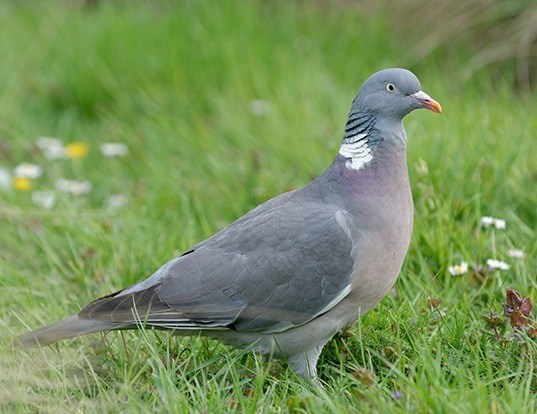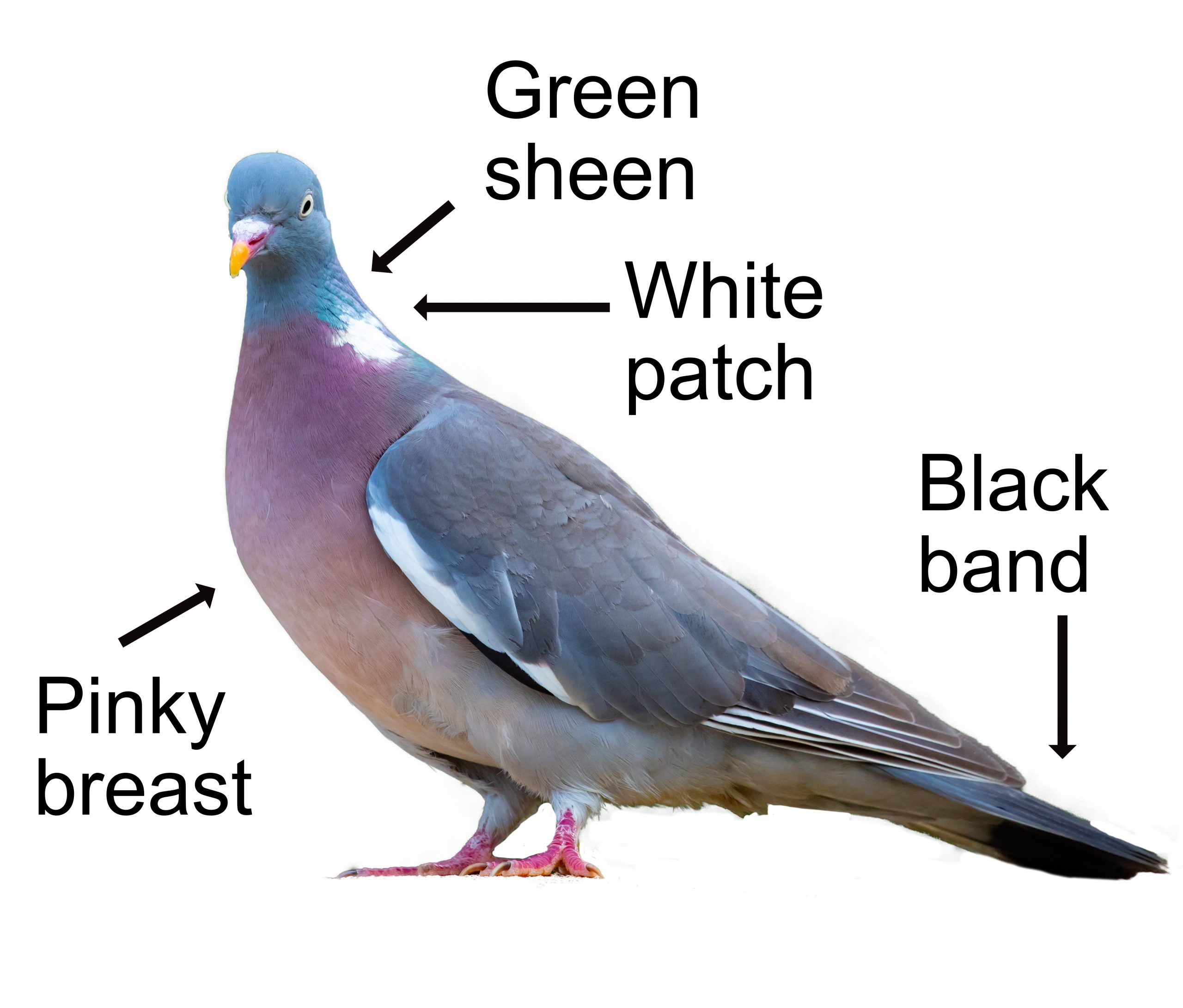
The commonest of the pigeons, fatty Woodpigeon is largely blue grey with a small head, broad wings that have a white crescent which is clearly visible in flight, a white neck patch, a black band on the tail and a pinkish bulging chest. Their neck also has a green and purple sheen. The young Woodpigeon is similar but without the white on their neck.

It takes quite a lot of effort for the porky Woodpigeon to get airborne, and in so-doing their wings clap behind their backs as they try to create as much down-draught as possible. They can't fly through small gaps so they don't even try to and simply clatter through the leaves and branches making a big din. In some parts of the country the Woodpigeon has become known as the 'clatter dove' or 'fatso' for short. When in trees, they often sit motionless for hours (because they are so full) and then go and poo on your car.
The Woodpigeon shouts, "Take two bowls laddie, take two bowls laddie, take two!" to make sure they get enough to eat which is why the sparrows chase fatty pigeon off whenever they can. They are mainly veggie and love seeds, cabbage (ugh), clover, and peas. Farmers and gardeners don't like Woodpigeons because they eat all the seedlings and are a serious pest. They can travel long distances to find a decent menu.
Amazingly, they breed all the year round, though July to September is their favourite time when there is plenty of food around. They can nest just about anywhere, including McDonald's. The male shows off to the female by flying up into the air and clapping his wings before gliding back down with his tail spread. This might, if he is lucky, lead to a period of billing and cooing. They build a flimsy nest of twigs and lay one or two eggs which hatch after 17 days. The young (called squabs) are fed for the next 8 days on 'crop milk' (like the Collared Dove) which is extremely nutritious. The young are then left on their own as mum and dad have had enough of being parents and fancy going off for a good takeaway instead. The young finally fly at 30 days but this can be variable depending on whether the nest is disturbed. They normally have 2 broods as any more would interfere too much with chow time.
The Woodpigeon is resident all year and often moves about in big communal roosts, particularly in winter. These large flocks can be seen moving to feeding areas and McDonald's fly throughs. Some Scandinavian pigeons come over in the winter as the takeouts here are better. There are 5 million birds in Britain and the numbers are stable because, being big and fat, the Woodpigeon has few enemies which may account for their success. The Latin name is ’columba palumbus’ where ’palumbus’ means 'woodpigeon' (as opposed to ’plumbus’ which means lead i.e. heavy) and ’columba’ means to dive or to plunge headlong (from their courting display or the way they sometimes fly).